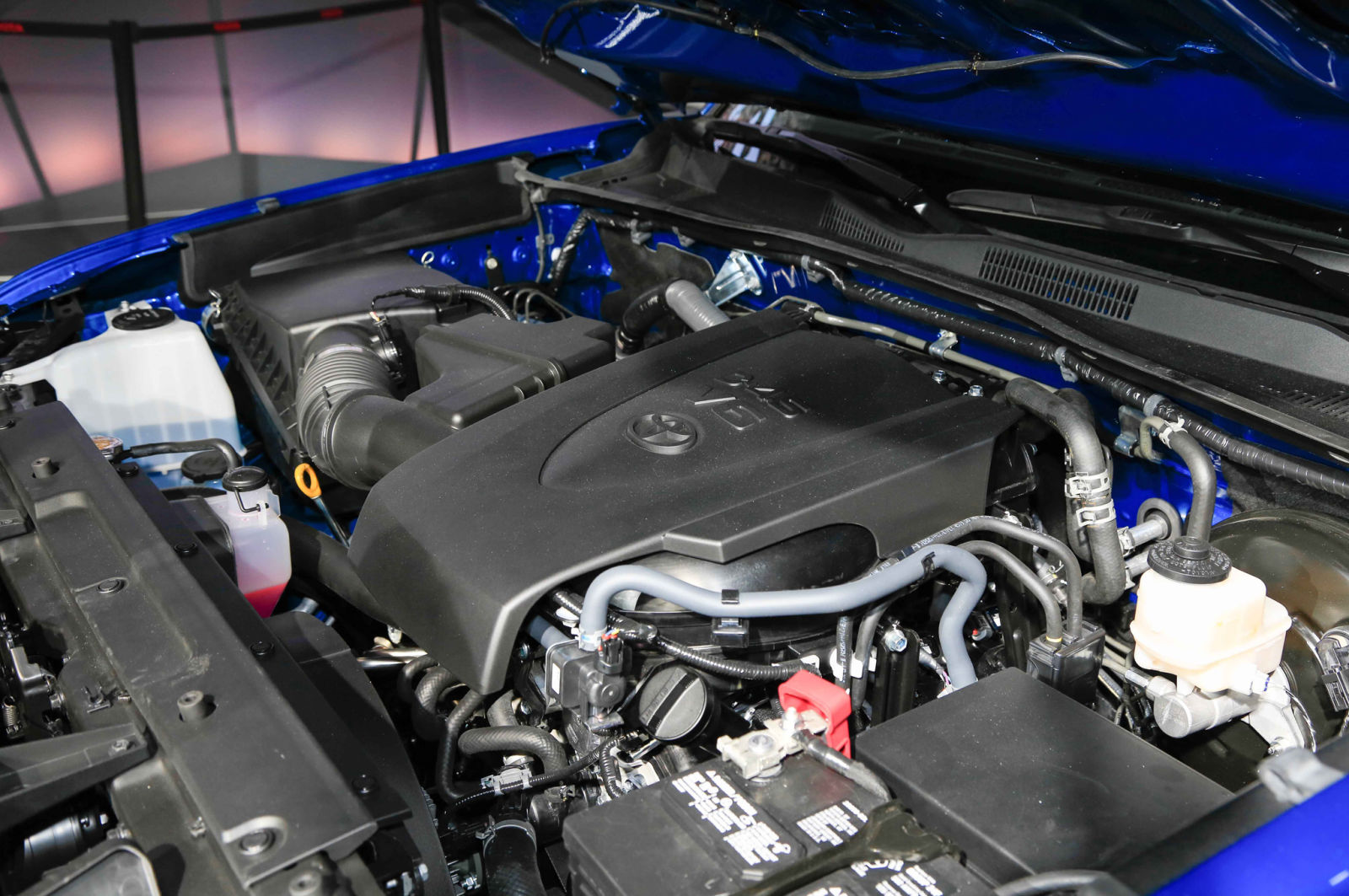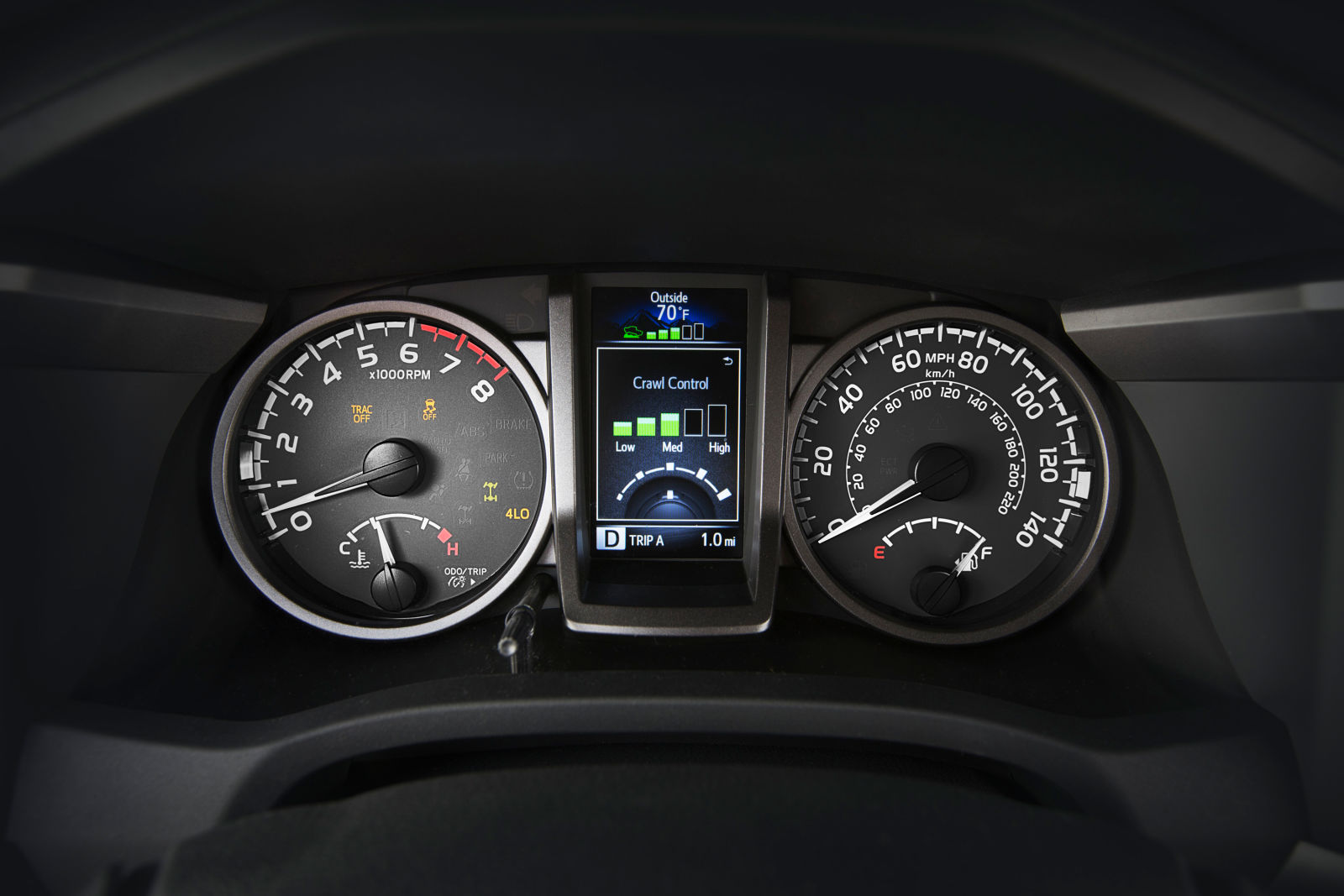
Maybe its just bothers me, but Toyota’s lack of information about the V6 in its upcoming Tacoma is irksome. Well here’s the deal; I’m going to tell you all about it right now. Its called the 2GR-FXE

I mean, I don’t actually know, cause I don’t work for Toyota...Sorry...but I have some pretty strong clues but first lets talk about the 2GR-FXE. Want my educated guess on output? Skip to the bottom, otherwise stick around!
In the GS450h hybrid it puts out 286 hp at 6000 rpm, 254 ft-lbs at 4000 rpm without the aid of its hybrid motors. Its a shorter stroke version of the engine that’s in the current Tacoma, the 4.0L 1GR-FE, which is my first clue:
Toyota doesn’t take risks with the Tacoma.
I mean obviously there has to be a new engine every so often for its trucks but historically speaking, if it aint broke don’t fix it seems to be the corporate screensaver at Toyota truck HQ. Not that its a bad thing, mind you since reliability is the cornerstone of Tacoma sales it makes sense to stick with a conservative formula. It also makes sense for modularity and keeping costs down internationally.
Although we know that the Tacoma is going to feature some pretty extensive changes to the chassis, the skin is awfully familiar and you can bet that many of the hard points are too. It makes sense then that an engine of identical exterior dimensions and mounting points yet more advanced would be an ideal candidate.
The 2GR-FXE is that advanced version, as it features almost all the current Toyota bells and whistles - D4-S dual injection, continuously variable VVT-i on both cams, and of course Toyota’s modified Atkinson cycle (lets call it MA for short.) Which is clue the second:
The similarities are hard to ignore
Things we know about the new Tacoma engine:
3.5 liters
Atkinson Cycle
D4-S injection
Things we know about the 2GR-FXE:
3.5 liters
Atkinson Cycle
D4-S injection
Now its not impossible that Toyota has a brand new V6 family , but it is unlikely that it would debut in the Tacoma which...as we’ve discussed...isn’t about taking risks. There is also history to suggest that Toyota likes to keep its engine families as long at it can, so long as they are still viable.
But is that all we know about the 2016 engine? No actually, since Toyota kindly provides us with the dash of the new truck.

Thanks for the red line Toyota.
The engine we know a lot about for the 2016 Tacoma is the sturdy but slow 2TR-FE 4 cylinder engine. We also know it red lines at 5500 rpm where this tach shows 6000. Coincidentally the 2GR-FXE also redlines at 6000 rpm.
Lastly and more subjectively what would you consider the biggest complaint people have about the current V6?
Noise?
Durability?
Low end grunt?
I can promise you the number one thing on most every current gen Tacoma owners mind is...
Fuel Economy.
The GR engine already has toughness and reliability in spades, but it lacks in 2 critical areas:
Horsepower
Fuel economy
The truth is that the current 236 hp isn’t the big number it used to be and in the age of 300 plus hp NA V6 engines it sure sounds wimpy to be carting around with a puny 236...I mean, can you even get up hills with that? Part of this is legit; HP is important at speed and more is generally better. Part of it is marketing, as in; On paper, the current engine get its ass handed to it by the competition. Well, at least with fewer horses running around you have fewer to feed, right?
Well...about that. The current 5 speed V6 Tacoma isn’t all that bad with fuel, but its not great either, and considering that the market for small and medium sized trucks has long stopped being about inexpensive utility and more about replacing the sedan in the garage each one of those miles per gallon of exploding dino is critical for sales. Toyota knows it needs better fuel economy in a big way for this truck. HP gets people into the showroom but in this segment miles per gallon and a car like experience is whats going to sell it. So this would be a good time to address the elephant in the room:
Why Atkinson Cycle?
First and foremost the marketer in me wants you to know that, yes, its usually used in cars you don’t like...got it but if you can get past that I think you will see it has its merit. The reason that its used in Hybrids (boo, hiss, etc) is because its very fuel efficient. I could write an entire article on the Otto vs MA (modified Atkinson) cycle, and still might, but for the sake of this study lets boil it down to:
Otto cycle has better specific output
MA has better use of the expanding gases that spin your crank shaft baby right round....like a record player even.
Interestingly Toyota HAS figured out a way to combine the snooze of fuel savings with the excitement of expanding gases in two parts; dual injection methods (port and direct) and wideband valve timing that takes advantage of both cycles. That’s the good news. The bad news is that its only starting to trickle in on cars like the Lexus RC-F and NX200T. Partly because its costly to add the kinds of electric assisted cam phasing that’s part of the VVT-ie system (in addition to the dual injection strategy and myriad of other small but exotic tech it takes to make the MA cycle work) and partly because Toyota has a history of holding onto the fancy stuff for Lexus. What it means is that the new Tacoma engine is not likely to get the Electric VVT-ie system that allows for the wide valve phasing required.
That puts us back on square 1 with the 2GR-FXE. As I mentioned before, the upside of the MA cycle is better fuel economy, the downside is lower specific output and specifically lower torque. It the sound of that last part has you worried, it has me worried too. What made the old trucks lack of hp palatable was the power “under the curve” thanks to an engine tuned for low end torque and a predictable flat curve. With the newer engine, Toyota will have to work some interesting engineering to be able to meet the characteristic torque expected in engines for vehicles like this. Then again, maybe most people don’t care; HP and MPG are all the numbers that people care about...that being said I think people will notice a lack of urgency even if they don’t know why.
What does it all mean?
Well, I guess if you came down here looking for numbers I should get those out of the way first.
Without VVT-ie (reworked 2GR-FXE):
~270 hp @ 6000 rpm
~260 ft-lbs @4000 rpm
And for fun, a version with VVT-ie (a reworked 2GR-FSE)
300+ hp @6000 rpm
275 ft-lbs @ 3800 rpm
For the likely candidate of the version without VVT-ie, we see gains of 35 for HP and undoubtedly huge gains for economy but a slight loss of torque, especially low down where it matters most. This is based on the specs for the GS450h but with 87 octane (not 91) and re-tuned for better torque. It will also most likely be the most fuel efficient midsize gas truck on the market and in all likelihood should have more power for passing and enough grunt for off-roading and towing but will probably loose that paper battle, unless your talking MPG. At first glance it looks underwhelming, but remember again that these are guesses. Good guessed, but guesses and they could surprise us all and do a full beans VVT-ie version and do a win/win for power and economy. That having been said, I don’t think they will. The question on my mind is:
Is winning on MPG enough?
The other part of the equation is the fact that the Tacoma was never a winner by being the best in any or all categories, it was a winner cause it scored high in the most places and had the quality, dependability and reliability people expected. I think its a bold move for Toyota here to chase mileage over power, lets see if it pays off Cotton.